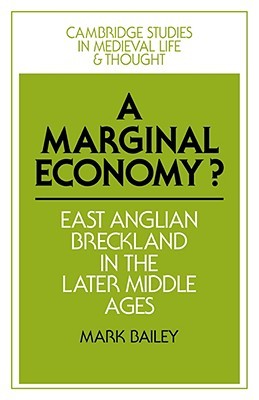
- We will send in 10–14 business days.
- Author: Mark Bailey
- Publisher: Cambridge University Press
- ISBN-10: 0521073146
- ISBN-13: 9780521073141
- Format: 14 x 21.6 x 2.1 cm, minkšti viršeliai
- Language: English
- SAVE -10% with code: EXTRA
Reviews
Description
A theory of the margin has long featured in the work of medieval historians. Marginal regions are taken to be those of poor soil or geographical remoteness, where farmers experienced particular difficulties in grain production. It is argued that such regions were cultivated only when demographic pressure intensified in the thirteenth century, but that a combination of soil exhaustion and demographic decline resulted in severe economic contraction by the end of the fourteenth century. Marginal regions are seen not just as sensitive barometers of economic change but as important catalysts in that change. Despite the importance placed by historians on the general theory of the margin, this book represents the first detailed study of a 'marginal region'. It focuses upon East Anglian Breckland, whose blowing sands are among the most barren soils in lowland England. Drawing upon a wide range of sources, this study reconstructs Breckland's late medieval economy, and shows it to be more diversified and resilient than the stereotype depicted in marginal theory.
EXTRA 10 % discount with code: EXTRA
The promotion ends in 23d.22:03:38
The discount code is valid when purchasing from 10 €. Discounts do not stack.
- Author: Mark Bailey
- Publisher: Cambridge University Press
- ISBN-10: 0521073146
- ISBN-13: 9780521073141
- Format: 14 x 21.6 x 2.1 cm, minkšti viršeliai
- Language: English English
A theory of the margin has long featured in the work of medieval historians. Marginal regions are taken to be those of poor soil or geographical remoteness, where farmers experienced particular difficulties in grain production. It is argued that such regions were cultivated only when demographic pressure intensified in the thirteenth century, but that a combination of soil exhaustion and demographic decline resulted in severe economic contraction by the end of the fourteenth century. Marginal regions are seen not just as sensitive barometers of economic change but as important catalysts in that change. Despite the importance placed by historians on the general theory of the margin, this book represents the first detailed study of a 'marginal region'. It focuses upon East Anglian Breckland, whose blowing sands are among the most barren soils in lowland England. Drawing upon a wide range of sources, this study reconstructs Breckland's late medieval economy, and shows it to be more diversified and resilient than the stereotype depicted in marginal theory.


Reviews